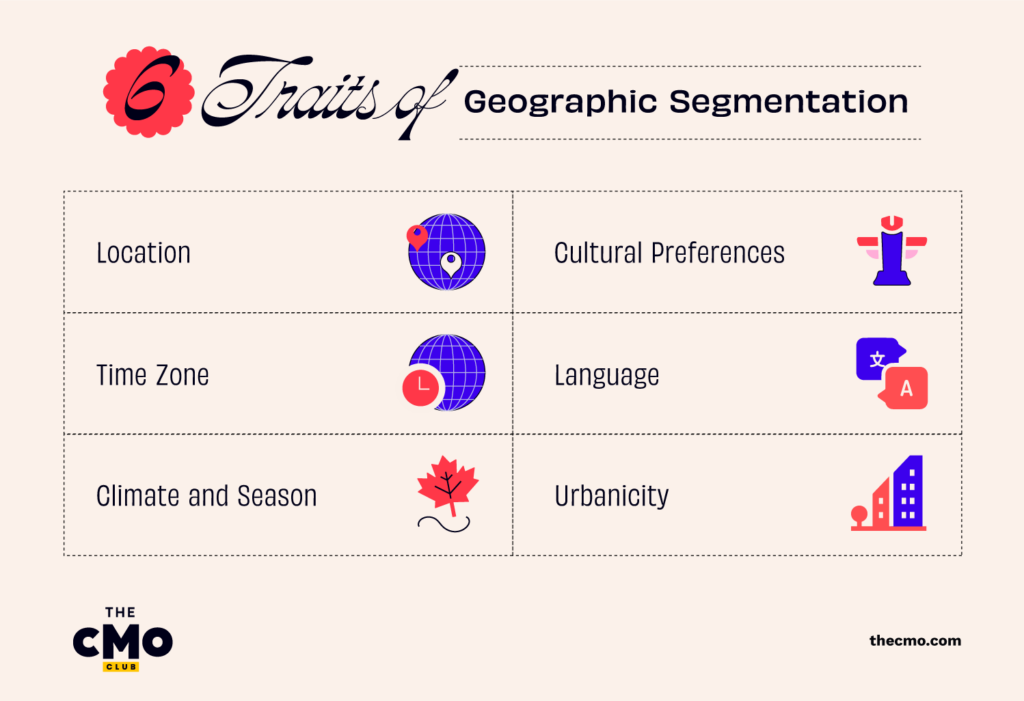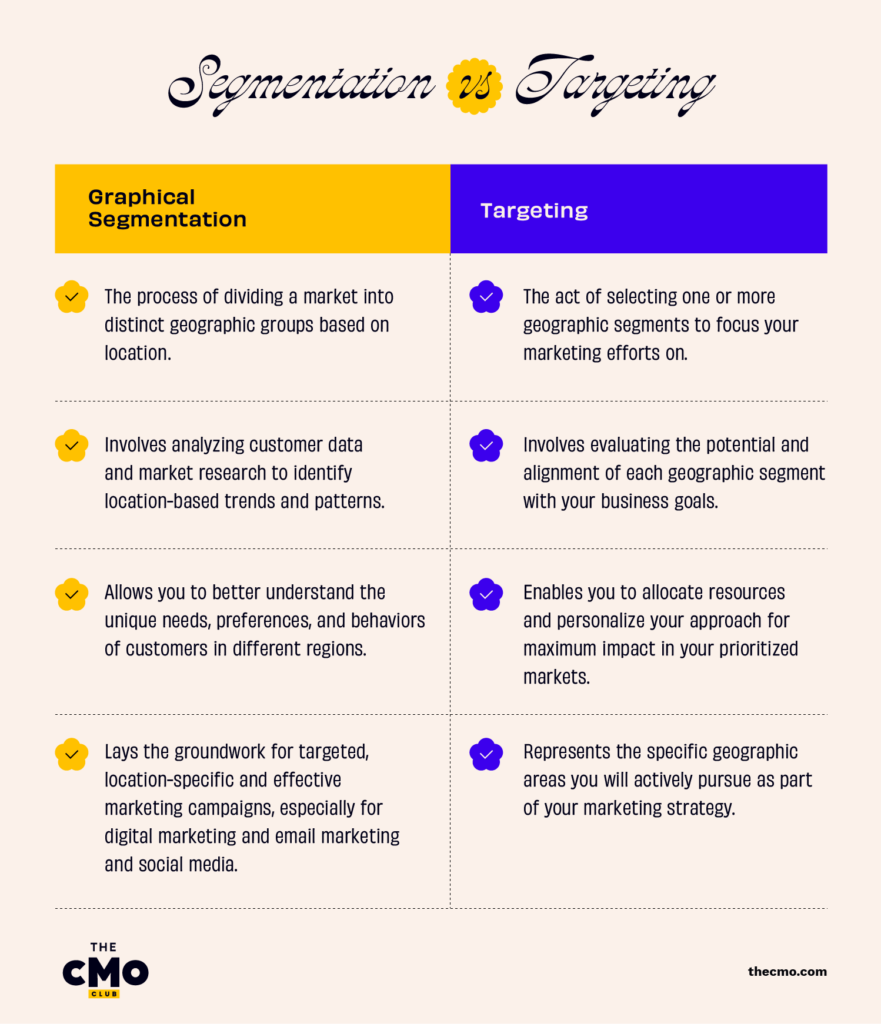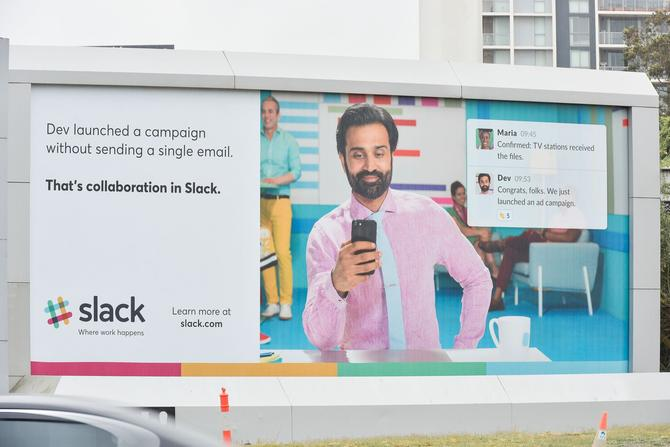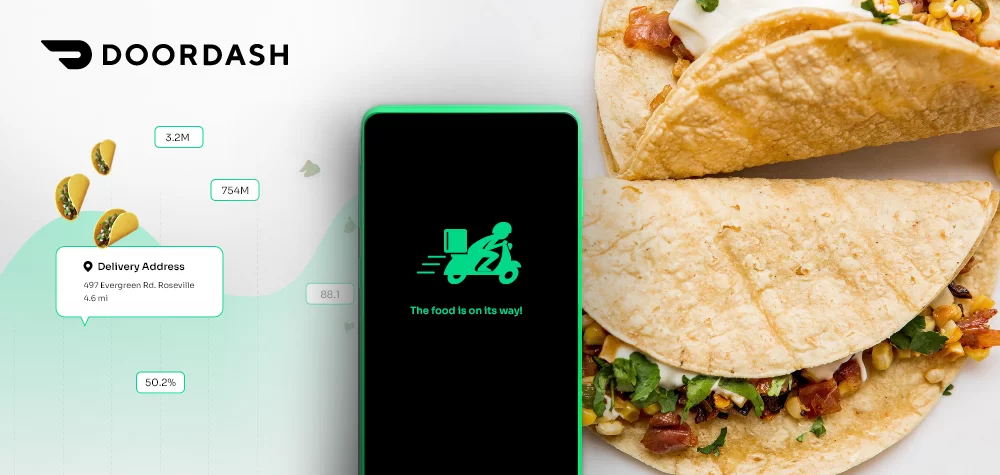If you’re a marketing leader, you know what it’s like to be under pressure. You’re expected to cut through the noise of everything else, and to deliver campaigns that drive meaningful customer engagement with your target audience. While demographic data provides a strong foundation, the reality for most companies is that your customers are spread out.
That's where geographic segmentation is your best friend. By leveraging location-based insights, you can take your ABM personalization efforts to the next level, crafting hyper-targeted strategies that resonate with customers in specific markets, whether that's a different country, state, or even city.
In this article, I'll unpack the power of geographic segmentation, share the key variables to consider, and reveal some of my best practical tips to help you overcome common challenges and elevate your location-based marketing.
What Is Geographic Segmentation?
Geographic segmentation is the process of dividing a market into distinct groups based on their physical location, whether that's by country, region, state, city, or even neighborhood. By understanding the unique characteristics, behaviors, and pain points of customers in specific geographic areas, you can develop highly targeted campaigns to better resonate with them.
Geographic segmentation is particularly valuable in account-based marketing (ABM) strategies, where the focus is on building deep, personalized relationships with high-value target accounts. By using this type of customer segmentation and analyzing the geographic locations of key decision-makers within your target accounts, you can tailor your messaging, channels, and product features to align with the specifics of those localized audiences.

Segmentation vs targeting
It's important to understand the distinction between geographic segmentation and targeting, as these two concepts work hand-in-hand.
Basically, geographic segmentation provides the insights you need to identify your most valuable target markets, while targeting determines which of those locations you will prioritize and how you will engage customers in those regions. By leveraging both strategies in tandem, you can maximize the efficiency and effectiveness of your location-based marketing initiatives.

Geographic Segmentation Variables
Capturing the right geographic data is essential for sending effective location-based marketing messages to your target account list. Here are some of the key variables to consider when segmenting your customer base:
Location
The most fundamental geographic variable is the physical location of your customers. This can include countries, specific regions, states, cities, and neighborhoods. Analyzing customer data at these different geographic levels allows you to uncover patterns and insights specific to each specific location. Specifics like urban vs rural areas are variables to consider as well.
Time zone
Different areas also have different time zones, which can significantly impact consumer behavior, content consumption, and communication preferences. This is especially crucial for large, global companies serving customers across multiple time zones.
Population density
The population size and density of a geographic area can influence factors like infrastructure, cost of living, and access to technology—all of which can shape your customers' different needs and purchasing habits.
Cultural preferences
Regional cultures, traditions, and values can significantly impact buying behaviors, communication styles, and brand perceptions. Understanding these cultural differences is critical for developing localized marketing strategies.
Language
Language barriers can create challenges for product adoption and customer support. Identifying the predominant languages spoken in your target markets allows you to provide content and assistance in the appropriate dialects.
Benefits Of Geographic Segmentation
Leveraging geographic data as part of your overall segmentation strategy can help you reach a lot of overarching goals. The biggest ones are these three:
- It empowers you to deliver highly localized campaign optimization.
By understanding the unique characteristics of customers in different regions, you can tailor your messaging, offers, channels, and even product features to better resonate with each target audience. This level of personalization can significantly enhance the customer experience and drive higher ABM engagement. - It opens the door to expansion into new high-potential markets.
Detailed location-based insights can uncover untapped geographic segments that align with your small business goals, allowing you to strategically grow your footprint rather than relying on guesswork. Plus, with a clear understanding of your most valuable regional markets, you can more efficiently allocate resources like marketing budget, talent, and sales territories to maximize return on investment across the board. - It provides quantifiable data points to inform a range of strategic decisions. From product development to channel optimization, this data-driven marketing approach helps ensure your initiatives are firmly grounded in a deep understanding of your target customers and their location-specific behaviors and preferences.
Challenges Of Geographic Segmentation
While the benefits of geographic segmentation are numerous, there are also some challenges and limitations to be aware of. Here are some of the hurdles:
- Obtaining accurate, up-to-date geographic data on potential customers.
Relying on third-party data sources or self-reported information from users introduces potential inaccuracies, making it difficult to create truly precise location-based profiles. Additionally, you may lack sufficient geographic data coverage, especially for niche or new markets. - The constantly evolving geographic landscape.
Factors like migration patterns, urban development, and economic shifts are continuously reshaping regional markets. Keeping your location-based insights current and relevant requires ongoing data collection and analysis, which can be resource-intensive. - The complex web of data privacy regulations, such as the GDPR and CCPA.
You have to ensure that you collect, store, and leverage customer location data in full compliance with these regulations, or you risk big penalties. - Collaboration across teams.
From marketing and sales to product and customer success, overcoming organizational silos to centralize location-based insights and coordinate localized initiatives can be a significant operational challenge. Thankfully, there are some great tools for helping marketing and sales work together.
Examples Of Geographic Segmentation
Let's take a closer look at a few real-world examples that demonstrate the impact of effective demographic segmentation, as we can learn a great deal of ABM best practices.
1. Slack targeting Australian businesses

Back in 2018, Slack, the productivity platform, launched an out-of-home campaign in Australia for the first time once they saw there was a surge in demand from Australian businesses for collaboration tools. They spent years getting to know the Australian market and acquiring geographical data that helped them launch ads in Sydney, Melbourne and Brisbane.
2. Doordash targeting local diners

DoorDash, the food delivery service, relies on geographic data and segmentation to promote specific restaurants to specific audiences and customers based on their location. Their app’s algorithm will use a customer’s current location to figure out which restaurants nearby should be featured on the feed, driving the customer to purchase due to convenience. Going further, understanding the local trends and tastes in specific markets can also help the brand get better insights on what customers currently crave.
3. Nike targeting city dwellers
Nike, the footwear company, also does geographic segmentation really well in their advertising, often addressing a specific city. In the advert above “Nothing Beats a Londoner” Nike shows the real Londoner, highlighting not only landmarks but general life in London neighborhoods.
Tips For Gathering Geographic Data
Collecting accurate and comprehensive geographic data is essential for building effective location-based segmentation strategies. Here are some key methods you can use to capture this valuable information:
Geographic information systems
Geographic Information Systems (GIS) are powerful mapping and spatial analysis tools that can provide rich insights into the geographic distribution of your customer base. By integrating GIS software like ArcGIS or QGIS into your marketing stack, you can visualize customer locations, identify regional clustering, and even overlay demographic, psychographic, and behavioral data for deeper segmentation analysis.
GPS and location analytics
Leveraging customer location data from GPS, WiFi, and Bluetooth signals can also be a valuable source of geographic insights. Tools like Google Analytics, Facebook Ads Manager, and marketing automation software offer granular location tracking capabilities that reveal where your customers are physically accessing your products and services. This can inform everything from regional content strategies to targeting of local advertising.
Geocoding
Geocoding is the process of converting physical addresses into geographic coordinates (latitude and longitude). By appending geocodes to your customer records, you can more precisely pinpoint their locations and conduct advanced spatial analysis. Many third-party data providers and API services offer geocoding solutions to enrich your existing customer data.
Additional Market Segmentation Techniques
While geographic segmentation provides powerful insights, it's important to recognize that it's just one piece of the overall audience segmentation puzzle. There are several other types of market segmentation that marketers can leverage to gain a more holistic view of their target audience:
Demographic segmentation
Demographic segmentation involves dividing customers based on observable characteristics like age, gender, income, occupation, and education level. This data helps create detailed customer profiles and reveals how buying behaviors and preferences may differ across various demographic groups.
Psychographic segmentation
Psychographic segmentation goes deeper into the internal characteristics that shape a customer's attitudes, values, interests, and lifestyle. This includes personality traits, hobbies, social class, and broader cultural influences. By understanding the psychological drivers behind purchasing decisions, brands can craft messaging that resonates on an emotional level.
Behavioral segmentation
Behavioral segmentation analyzes customer actions and usage patterns to group them based on their digital behaviors. This can include website engagement, content consumption, feature utilization, and subscription plans. Identifying these behavioral trends allows companies to personalize the user experience, optimize product roadmaps, and develop targeted cross-selling or upselling strategies.
Join For More Targeted Insights
While geographic segmentation offers numerous benefits, it also presents challenges around data accuracy, changing market landscapes, and balancing personalization with scale—which must all be thoughtfully navigated.
To quickly recap the key takeaways:
- Understanding the unique characteristics, preferences, and behaviors of customers in different regions can craft highly personalized and impactful campaigns that drive engagement and conversion.
- Geographic segmentation allows for stronger tailoring of your marketing efforts to the specific needs and dynamics of local markets, optimizing everything from your messaging to product features.
- Analyzing key geographic variables like location, time zone, population density, cultural norms, and language can provide a wealth of insights to inform your segmentation strategy.
If you're looking to take your location-based marketing to new heights, be sure to subscribe to The CMO newsletter.



